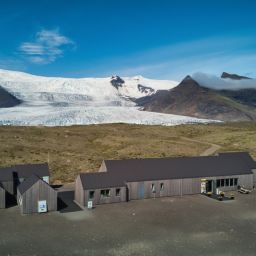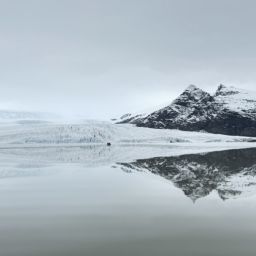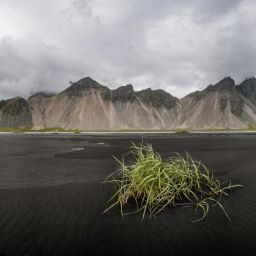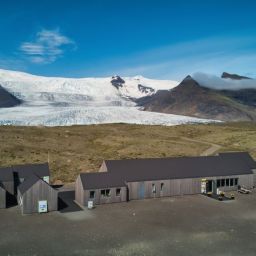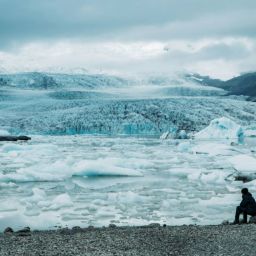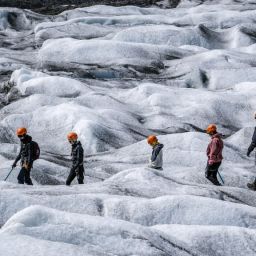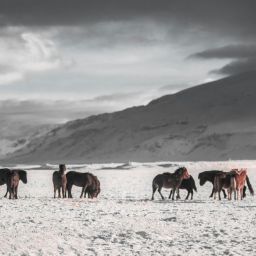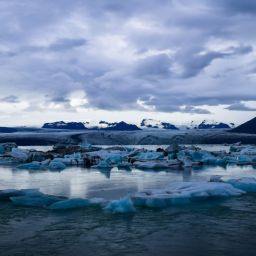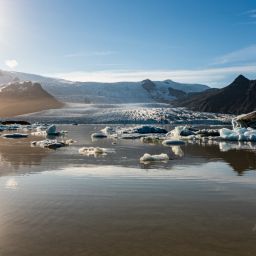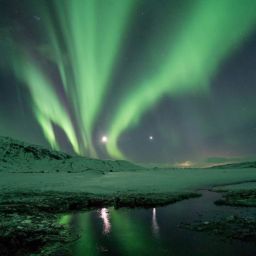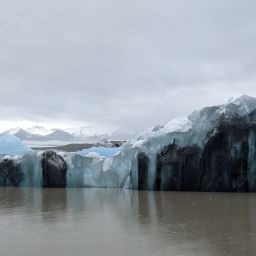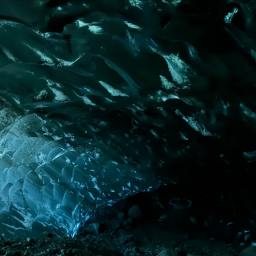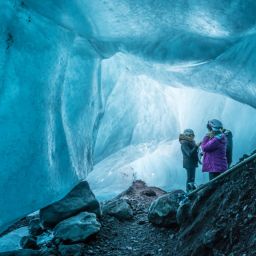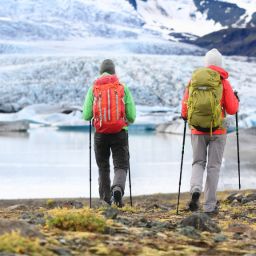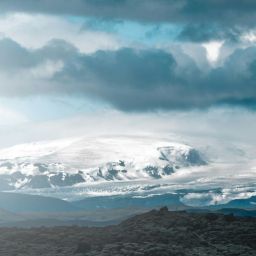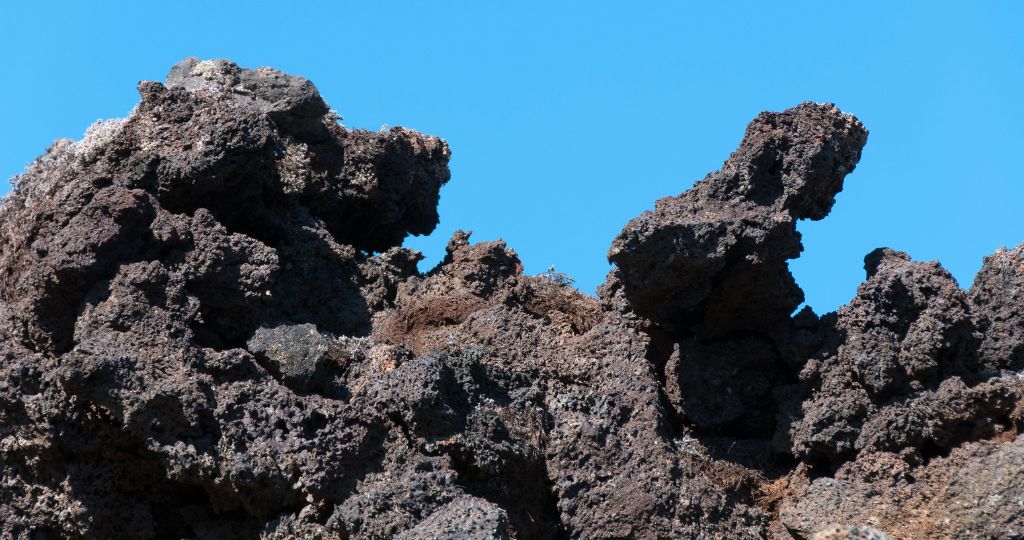
It’s human nature to look for explanations when we don’t understand something. In the past, when scientific knowledge wasn’t what it is today, myths and legends filled the gaps. Amid Iceland’s dramatic coast and countryside, there’s ample inspiration to feed people’s imaginations.
As such it’s no surprise to learn that there are many folklore tales that can be traced back to centuries past involving all manner of mythical creatures from trolls to elves. The south east of Iceland, in which Fjallsárlón is located, is no exception. In this article we’ll take a brief look at some of the local folklore tales and glacier myths pertaining to the region.
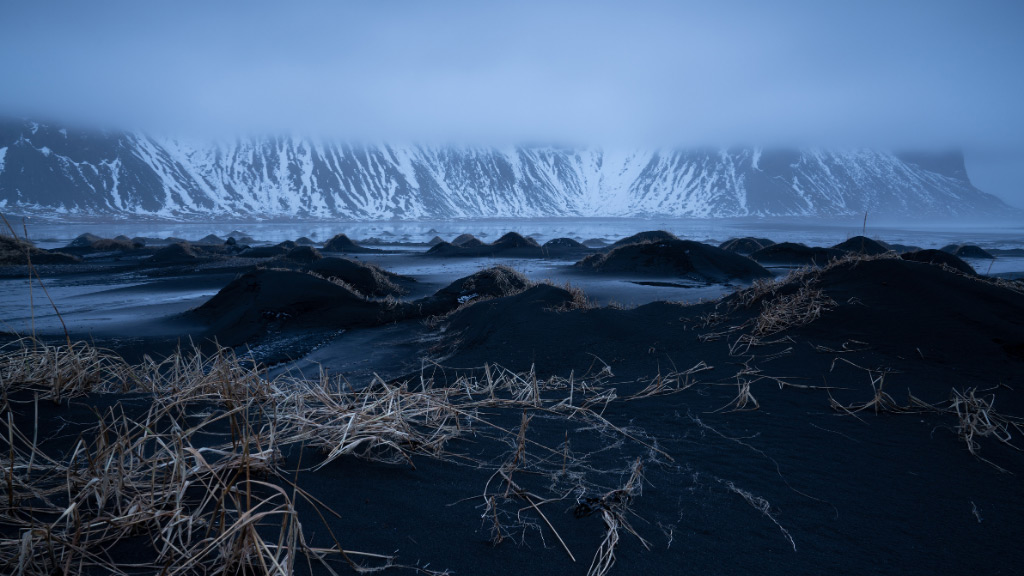
Black volcanic sand by Höfn in Hornafjörður.
Tales from the glacier
Vatnajökull and the Icelandic highlands have also provided a backdrop to folklore myths and legends. In one story, a subglacial eruption wiped out a cluster of eighteen farms and a church at Skógey in Hornafjarðarfljót. What was once a forested area was covered in thick layer of black volcanic sand.
A few years later some men were walking their dog nearby when the animal began acting strangely. It howled and a strange thing happened: the sound of barking could be heard from underground. The men began to dig, curious about what they would find. To their surprise, a woman and her dog emerged from their subterranean grave, only to die when they came into contact with fresh air.
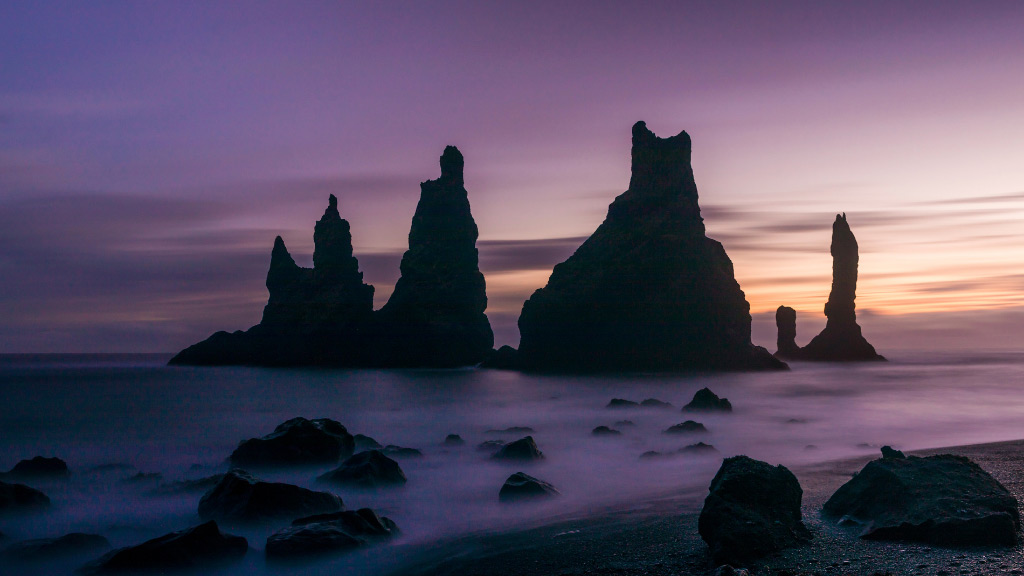
Reynisdrangar by Reynisfjara were believed to be petrified trolls that had turned into stone by the sun while dragging a three-mast ship to shore.
Rock formations resembling people, animals and manmade objects
Across Iceland there are numerous examples of rock formations said to resemble people or animals. To reach Fjallsárlón you’ll most likely have driven past the sea stacks of Reynisdrangar at Vik, which according to legend are petrified trolls who were caught out by the rising sun. Up in the north of Iceland, Hvítserkur is variously likened to a dragon, dinosaur or troll, while there’s another in the Westman Islands that looks like an elephant with its trunk in the water.
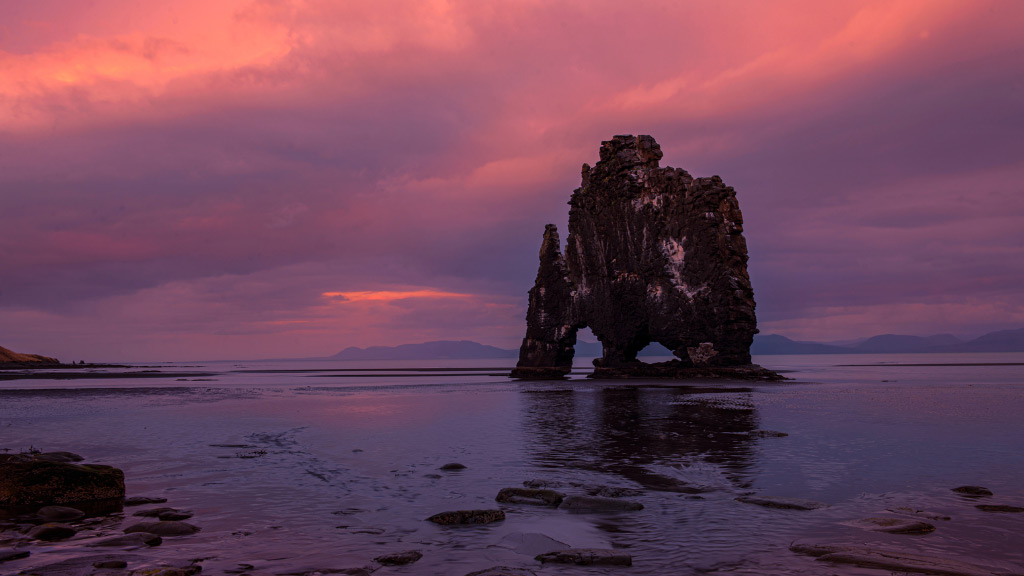
Hvítserkur sea stack is one of many rock formations in Iceland that were thought to be petrified trolls.
In the mountains of Hoffellsfjöll on the eastern edge of Vatnajökull, there’s a rock shaped like a house. Its name is Goðaborg. According to legend, a shepherd was up there one day trying to find some lost sheep and was shocked to find a huge ox beside it. In his haste to escape, he fell into a pile of leaves. Grabbing a handful of them he turned and ran, finding to his amazement that they’d turned into money.
Travelling north east of Fjallsárlón, Klukkugil is a gorge that takes its name from a troll called Klukku. There are several stories that relate to sightings of this female giantess, some of which refer to other trolls in the area. The fear of encountering Klukku spooked many locals and the folklore tales which involve her often have people running from her in fear of their lives.
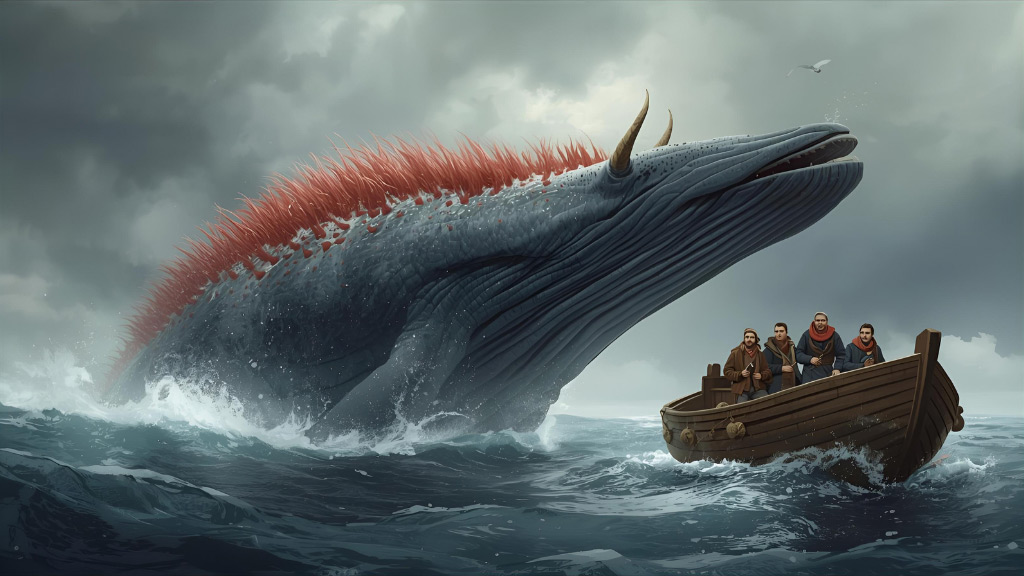
One of Iceland’s many sea monsters was Rauðkembingur, a whale like monster that pulled down boats with ease.
Sea monsters and mermaids
Folklore tales also abound of sea creatures taking many forms. Along this part of the south coast, there are stories of seals understanding human communication and sirens leading herds of cows into the ocean before themselves being swallowed up by the waves. Brunasandur is the setting for a story about a mermaid who lured men on horseback into the surf, but could swim so fast they could never catch her.
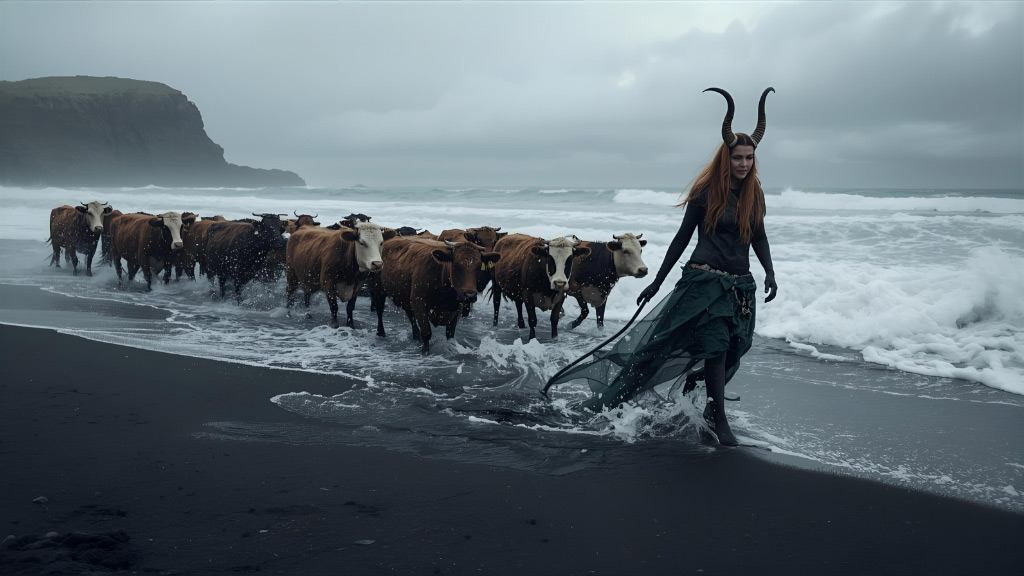
A siren luring a herd of cows to the sea in Iceland.
In the 19th century at Sævarhólar, a woman named Margrét Sveinsdóttir was tending to the farm while her husband was away. One night, a giant appeared in her room. Her friend told her it was Sævar the rock giant and that his presence was a good omen as he would warn of approaching storms, giving Margrét and others like her sufficient time to bring livestock inside for safety before the bad weather hit.
If you’re keen to read more about such folklore stories and legends, both near Fjallsárlón in Southeast Iceland and elsewhere in the country, then you might be interested in delving into a database begun by Professor Terry Gunnell from the University of Iceland. The legends and myths have been mapped geographically as well as categorised so that you can explore tales by area as well as by theme.


